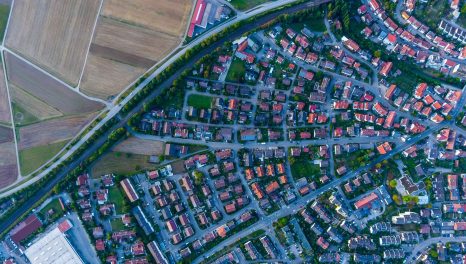New Energy Resilience Framework launched by Arup
Arup has launched an Energy Resilience Framework which is designed to support those responsible for energy systems in evaluating their overall resilience to disruptors and to identify improvement measures.
5th September 2019 by Networks

The broad framework facilitates evaluation of system resilience not only by considering the physical assets, but also by acknowledging the equal importance of other non-technical factors such as leadership, policies, institution and human factors.
It has been designed to frame resilience evaluation by any decision maker in the energy value chain across the world; governments, regulators, investors, generators, customers, owners, transmission and distribution companies. Its flexibility and range mean it can be applied to different scales of energy system and can also be used for components of these systems, including generation assets or regulations.
Alan Thomson, global energy systems leader at Arup, said: “We live in an interconnected world and depend on reliable energy provision to perform everyday activities from commuting to work and switching lights on, to keeping data servers running and water supplies flowing. Faced with increasingly unpredictable climactic events, weather systems and a growing reliance on digitalisation, resilient energy provision has never been so critical. We have designed the framework to help our clients challenge their resilience plans, enabling energy systems to reliably meet our energy needs in the face of an increasingly complex stressor landscape.”
The Energy Resilience Framework identifies 11 goals built around three core dimensions to analyse and shape system resilience. The three dimensions are:
- Leadership and Strategy: The alignment of policy, practices and informed decision-making within and between public and private sector organisations. This ensures the stability and sustainability of the energy supply, especially to support critical services such as healthcare.
- Economy and Society: The social and economic systems that enable the formation and operation of energy systems and connect their function to economic and social outcomes.
- Infrastructure and Ecosystems: The quality of the built and natural systems that enable energy transformation and ensure supply to end users.
The 11 goals are underpinned by 66 indicators, which bring further definition to the goals and indicate the critical factors that contribute towards energy resilience.
The Energy Resilience Framework draws on Arup’s multi-disciplinary resilience experience across the built environment.
Comments
Login on register to comment
Related content

Gas
Utilities mobilise coronavirus vulnerability support
£800,000 of support has been offered to support those struggling as a result of the pandemic

Gas
ENA champions network key workers in new campaign
Trade body justifies continued presence of network staff in customer communities

Power
Surge in popularity for ‘Power Up’ safety website as parents teach at home
UK Power Networks' free website designed to help children stay safe around electricity has seen its visitor numbers rise by more than 90%
Related supplier content

Power
Load patterns and lockdown: how Covid-19 is impacting electricity networks
Insights into dynamics on the low voltage network as the outbreak unfolds

Downloads
Protect electrical equipment from insulation failure
Insulation faults are a major cause leading to the eventual failure of electrical equipment. Partial discharge (PD) is a very reliable indicator of developing insulation faults. Regular PD testing allows users to detect and analyze PD activity

Heat
How E.ON. is helping the City of London become a zero emissions city
Discover Citigen. Deep in the heart of our bustling capital